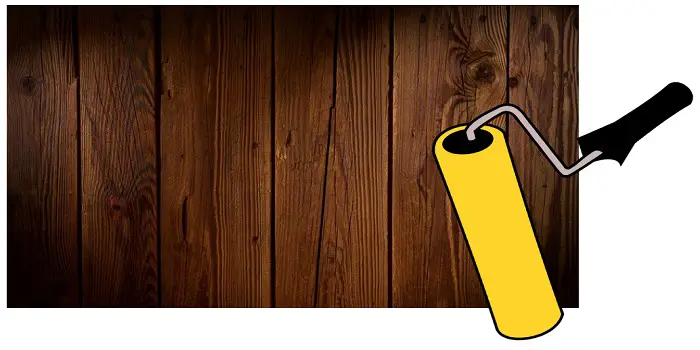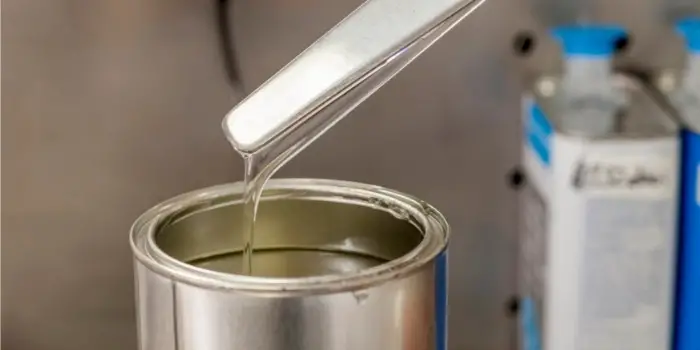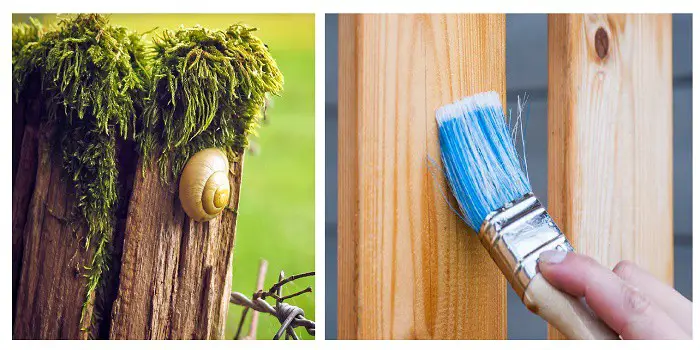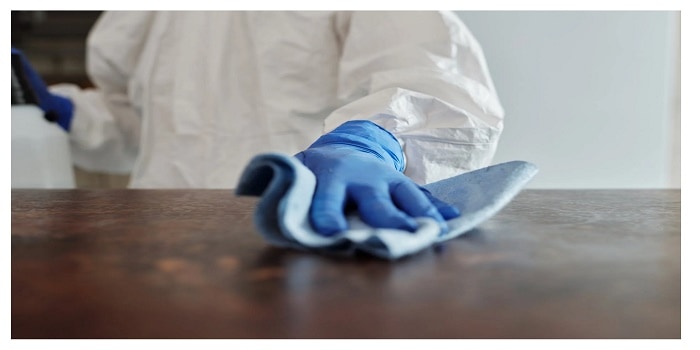
Polyester resins are highly popular in a wide variety of projects.
From being in swimming pools and ponds to model making to building boats, you can find this material used in many different applications.
This includes Duroplaste, which are fiber composites. These should, however, not be confused with thermoplastics because they are not pliable in nature.
There are two basic types of polyester resin, slow and fast curing. There are also stages between slow and fast which are present as well.
The type of use will affect the outcome of where it is applied.
Properties of Polyester Resin
There are many different properties associated with polyester resin. This includes different coloring and filling agents.
One of the most common properties is its ability to bond with glass fibers.
Once the resin has fully cured, it becomes highly resistant to water and weather conditions.
It can even resist aqueous salt solutions along with the weaker forms of non-oxidizing acids.
In addition, there are polyester resins that are safe to consume. They are used with food products and do not have any toxic properties.
Polyester Resin Applications
There are a considerable number of applications ranging from building boats to creating gutters, bumpers, and so much more.
The resins can be used to repair plastic components as well.
Plus, the clear polyester resin is often used in outdoor applications such as swimming pools, Jacuzzis, and ponds.
- Aircraft, vehicles, and marine applications
- Appliances and packaging material
- Composite materials, such as fiberglass resin
- Construction and homebuilding
- Furniture, especially outdoor furniture
- Bulk molding compound and sheet molding
Sealing Wood with Polyester Resin
So versatile is a polyester resin that you can use to seal the wood.
You can find this substance in two types, laminating and finishing.
Finishing is a resin that adds wax so it can fully harden. Such resins cannot be painted unless you remove the wax surface first. However, this is the more popular of the two polyester resins.
Laminating resin will also harden but remain tacky enough to allow fiberglass or paint to bond with the surface. To properly harden, this type of resin will need methyl ethyl ketone peroxide.
Step One:
Start by filling a small bucket with polyester laminating resin. Then add four to six parts of acetone to thin it out.
Mix using a stir stick until the resin becomes like water. Remember to mix thoroughly and scrape the sides and the bottom of your container to blend the mixture properly.
Step Two:
Add twelve drops of catalyst per fluid ounce of resin and mix it thoroughly.
It’s good to make up a smaller batch that can be used in about 15 minutes, as it will begin to harden.
A new batch of resin will have to be created after the first one hardens. The hardening process generally takes about 30 minutes.
Step Three:
Use a felt roller to apply the first coat of resin. Thoroughly cover the wood and then clean the roller using acetone.
Step Four:
Mix another batch of resin but cut back on the amount of acetone.
Add the catalyst, stir, and apply the resin with the roller. Expect to apply at least five coats, each succeeding coat with less acetone.
Step Five:
Mix the last batch of resin and add four to five drops of a liquid wax solution.
Add the catalyst, mix with a stir stick, and apply the final coat using the roller.
Clean up the roller using acetone and let the resin cure for up to six hours.
The wood you get will be waterproof when the resin dries.
Safety Tips and Precautions
Before using polyester resin for wood, make sure the surface you are working with is clean, and remove any dirt, grease, or dust.
Because the liquid form of polyester resin is toxic, you need to be careful.
Avoid working in any room inside the house, as the toxic fumes generated during the curing process can be problematic.
It is best to work outside, but if you are in a well-ventilated area, that will do. Be sure to wear protective clothing, goggles, gloves, and a respirator mask.
Do not let any of your skin come into contact with the resin when it is wet.
Also, be sure to cover the area around you with drop cloths or newspapers to avoid getting any resin on surfaces.
Have some acetone handy in case it spills.
Storing the Polyester Resin
Always store the resin in a cool, dry place with the lid sealed. Do keep the resin in its original container, and it should last for up to six months.
However, some polyester resins, such as MEKP, need to be used quickly, so always follow the instructions.
It is also important to keep the product away from any fires, such as in the fireplace, gas-powered stoves with a pilot light, and cigarettes, pipes, or cigars.

Is Polyester Resin the Same as Epoxy?
Polyester resin is close but simply not as good an adhesive compared to epoxy.
If you are engaging in fiberglass repair work, then epoxy is the only choice. This is because polyester resin is about 20% less effective compared to epoxy.
Polyester resins tend to be vicious and pale in color. This is because the solution normally contains up to 50% styrene, which makes the substance easier to use.
Epoxy resins are quite good for many DIY projects.
However, epoxy resins are more expensive and must be blended just right to get the proper results.
If you have never used epoxy resin before, it is best to start with polyester resin, as it will be easier to use and get better results.
But you can always practice with epoxy resins on scrap material first.
Epoxy Resin or Polyester Resin: What is Best?
Epoxy resins are generally superior to polyester resins in terms of durability, wear, cracking, and resistance to peeling.
Epoxy resins also withstand both chemical and environmental harm while lasting for a long time.
However, if the repair you are making is short-term in nature, then a polyester resin may work best.
Below are a few pros and cons of using it, just to make sure that you know well about the product you are using.
Advantages of Polyester Resins
- Less Expensive
- Wider Variety of Materials Where It Can Be Used
- You Can Adjust the Time Requirements for Polyester Resins Easier
- More Flexible, Less Stress to Use
- Good Resistance
- Low Shrinkage
Disadvantages of Polyester Resins
- Produces Toxic Fumes
- Weaker than Epoxy Resins
- It cannot Be Used on Metal or Glass
- Less Water-Resistant Compared to Epoxy Resins
FAQs
Is Polyester Resin Combustible?
Polyester resin is not combustible.
However, it is flammable if it contains a styrene monomer. The flashpoint of polyester resin is 32°C (90°F).
Other resins that contain a methyl methacrylate monomer tend to have lower flash points, depending on the amount present.
How Can You Identify Polyester Resin?
When you are trying to identify polyester resin, it will have a few identifying factors.
If the synthetic resin is made up of two parts, it is not polyester resin.
Polyester resins are only one-part systems, and they will never come as a kit. If the product is being sold as part of a kit, this should be your first clue that it is not polyester resin.
The second clue is the price; if it seems too good to be true, it probably is.
Polyester resin is not a cheap product, so if you find it being sold for an unusually low price, chances are it is not the real thing.
Can You Waterproof Plywood with Polyester Fiberglass Resin?
Polyester fiberglass resin on plywood is not a very good idea because it can’t be sanded and prepared well, which is most of the time required before using polyester fiberglass resin to bond on the surface.
So, it’s better to avoid using polyester resin on plywood or other such surfaces like particle board, MDF, etc.
Final Thoughts
Polyester resin products are great for sealing the wood but buying and using it can be a bit complicated task, especially for beginners.
It’s good to do a bit of research on the subject before you use it for the very first time for your project.
Depending on your project, go for the right product with a well-known, reputable manufacturer.
This will help in curing the finish better and in getting nice-looking final results.
Share the post "How to Seal and Waterproof Wood with Polyester Resin?"

Hi, I am Mark Garner a professional carpenter, woodworker, and DIY painter. I live in the small city of Peoria, Arizona as a semi-retired woodworker. I have started this blog with a simple motive to help you with my wood experience in this sector. If you like to know more about what I love doing and how it all got started, you can check more about me here.




